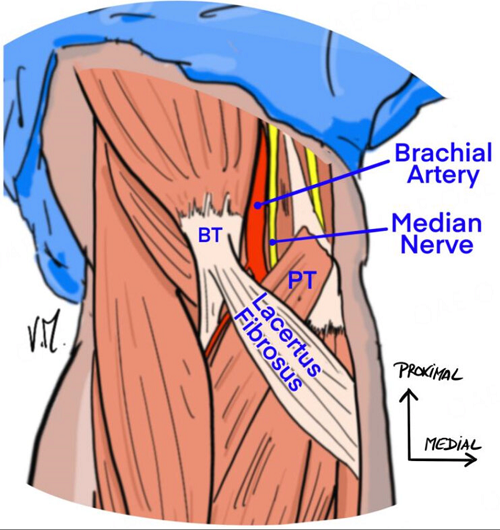
The Ultimate Guide to Managing and Healing Wrist Fractures: Expert Tips and Effective Strategies
Are you suffering from a wrist fracture and looking for expert guidance on managing and healing it effectively? Look no further! This comprehensive guide will provide you with the ultimate tips and strategies to regain strength and mobility in your wrist.
A wrist fracture can be debilitating, affecting your ability to perform even the simplest daily tasks. But with the right information and approach, you can speed up your recovery process and get back to doing what you love.
Our team of experts has compiled a wealth of knowledge and practical advice to help you navigate the healing journey. From understanding the different types of wrist fractures to learning about the latest advancements in treatment options, we’ve got you covered.
Discover the best practices for managing pain, promoting healing, and preventing future injuries. Learn effective exercises and rehabilitation techniques that will enhance your wrist’s flexibility and strength. Whether you’re an athlete, a busy professional, or simply someone seeking relief and improved functionality, this guide is for you.
Don’t let a wrist fracture hold you back any longer! Dive into our ultimate guide and take the first step towards a full recovery.
Types and Causes of Wrist Fractures
Wrist fractures can occur as a result of various causes, such as falls, sports injuries, or accidents. The wrist is made up of multiple small bones called carpals, and a fracture can involve any of these bones. The most common types of wrist fractures include:
- Colles’ fracture: This is the most frequent type of wrist fracture, typically occurring when a person falls on an outstretched hand. It involves a break in the radius bone, one of the two bones in the forearm.
- Scaphoid fracture: The scaphoid bone is located on the thumb side of the wrist and is prone to fractures. This type of fracture often occurs during a fall when the person lands on an outstretched hand.
- Triquetrum fracture: The triquetrum is one of the carpal bones located on the pinky side of the wrist. Fractures in this bone can result from a direct blow or excessive force applied to the wrist.
- Hamate fracture: The hamate bone is located on the palm side of the wrist and can be fractured due to sports-related activities or direct trauma.
Understanding the type of wrist fracture you have is crucial for determining the most appropriate treatment plan and rehabilitation strategies. It is essential to consult a healthcare professional for an accurate diagnosis. In case, you are looking for the best wrist and hand surgeon in Dubai, Dr Marouane Bouloudhnine will be the best one to consult.
Signs and Symptoms of a Wrist Fracture
Identifying the signs and symptoms of a wrist fracture is vital for seeking prompt medical attention and initiating appropriate treatment. Common indications of a wrist fracture include:
- Severe pain and tenderness: You may experience intense pain in the wrist area, especially when trying to move it or apply pressure.
- Swelling and bruising: Wrist fractures often lead to swelling and bruising around the injured area. The extent of swelling and bruising may vary depending on the severity of the fracture.
- Deformity or misalignment: In some cases, a wrist fracture can cause visible deformity or misalignment of the wrist bones. This may be evident through an abnormal positioning or shape of the wrist.
- Limited range of motion: A wrist fracture can restrict the movement of your wrist, making it difficult to perform simple tasks like gripping objects or rotating the wrist.
- Numbness or tingling: In rare cases, a wrist fracture can cause nerve damage, leading to sensations of numbness or tingling in the hand or fingers.
If you experience any of these symptoms after an injury, it is crucial to seek medical attention promptly. A healthcare professional will conduct a thorough examination and may order imaging tests, such as X-rays or MRI scans, to confirm the presence of a wrist fracture.
Diagnosis and Treatment Options for Wrist Fractures
Once a wrist fracture is suspected, a healthcare professional will perform a comprehensive evaluation to make an accurate diagnosis. This typically involves a physical examination, a review of your medical history, and imaging tests. X-rays are commonly used to visualize the bones and identify any fractures or abnormalities.
The treatment for a wrist fracture depends on various factors, including the type and severity of the fracture, as well as individual patient considerations. The two primary treatment options for wrist fractures are surgical and non-surgical approaches.
- Non-surgical treatment: Non-surgical treatment is typically recommended for stable fractures that do not involve significant displacement or misalignment of the bones. This approach may involve immobilization of the wrist using a cast or splint to allow the bones to heal naturally. Pain medications and anti-inflammatory drugs may also be prescribed to manage pain and reduce swelling.
- Surgical treatment: Surgical intervention may be necessary for more severe wrist fractures that involve significant displacement or those that fail to heal with non-surgical methods. The surgical procedure may involve realigning the fractured bones and securing them with screws, plates, or wires. This helps stabilize the fracture and promotes proper healing.
The choice of treatment will depend on several factors, including the type and location of the fracture, the patient’s age and overall health, and the goals of treatment. Dr Marouane Bouloudhnine and his expert team will provide personalized advice based on your specific situation.
Surgical and Non-surgical Interventions for Wrist Fractures
When it comes to treating wrist fractures, both surgical and non-surgical interventions play a crucial role in restoring wrist function and promoting healing. Let’s explore these treatment options in more detail.
Non-surgical interventions
Non-surgical treatment methods are often the first line of approach for stable wrist fractures that do not involve significant displacement. The primary goal of non-surgical interventions is to immobilize the wrist and allow the bones to heal naturally. Here are some common non-surgical treatment options:
- Casting: A cast is a rigid, protective material that is applied to the injured wrist to keep it immobilized. It is typically made of fiberglass or plaster and helps prevent movement of the fractured bones. The cast is usually worn for several weeks to allow the bones to heal.
- Splinting: A splint is a less rigid form of immobilization compared to a cast. It is often used for milder fractures or as a temporary measure before casting. Splints are typically made of lightweight materials, such as foam or plastic, and provide support and stability to the injured wrist.
- Medications: Nonsteroidal anti-inflammatory drugs (NSAIDs) and pain medications may be prescribed to manage pain and reduce inflammation associated with a wrist fracture. These medications can help alleviate discomfort and promote healing.
Non-surgical interventions are generally effective for stable wrist fractures and can lead to successful healing and recovery. However, it is essential to follow the healthcare professional’s instructions regarding cast or splint care, regular check-ups, and any necessary lifestyle modifications during the healing process.
Surgical interventions
Surgical intervention may be necessary for more severe wrist fractures that involve significant displacement or those that fail to heal with non-surgical methods. Surgery aims to realign the fractured bones and stabilize them to promote proper healing. Here are some common surgical interventions for wrist fractures:
- Open reduction and internal fixation (ORIF): This surgical technique involves creating an incision to directly access the fractured bones. The bones are then realigned, and internal fixation devices, such as screws, plates, or wires, are used to secure them in place. ORIF provides stability to the fracture site, allowing for optimal healing.
- External fixation: In some cases, an external fixator may be used to stabilize the fractured bones. This involves the placement of pins or wires through the skin and into the bones on either side of the fracture. The pins or wires are then connected to an external frame, providing stability and support to the fractured bones.
Surgical interventions are typically recommended for complex or unstable wrist fractures. The specific surgical technique will depend on the nature of the fracture and individual patient factors. Following surgery, a rehabilitation program will be initiated to restore wrist function and promote full recovery.
The Final Thoughts
It is important to consult with your healthcare professional before implementing any wrist pain management techniques to ensure they are appropriate for your specific situation. They can provide personalized advice and recommend the most suitable strategies for you.






